コレクション 2 4 8 16 ... 2n formula 878435-What is the rule for 2 4 8 16
Answers Click here to see ALL problems on Sequencesandseries Question 2271 what is the general term formula for 1,2,4,8,16,32,64,128,256,512 Answer by Alan3354 () ( Show Source ) You can put this solution on YOUR website!2n means 2 x n therefore, 2 x 1 = 2 2 x 2 = 4 2 x 3 = 6 2 x 4 = 8 2 x 5 = 10 These are the numbers we have got after multiplying n x 2, you will(2n 8)(n 2)> n=4, n=2 are the solutions 2)If you cannot find simple factors, you are left with the quadratic formula which always provides the correct answer n = b ± sqrt(b^2
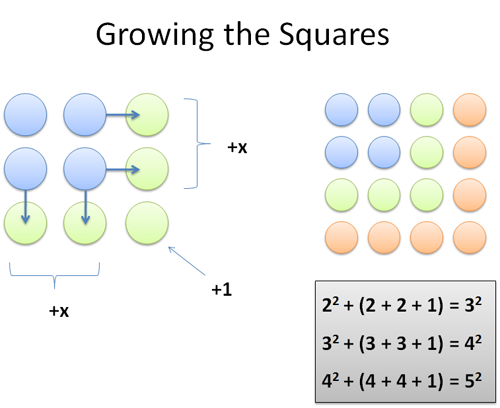
Surprising Patterns In The Square Numbers 1 4 9 16 Betterexplained
What is the rule for 2 4 8 16
What is the rule for 2 4 8 16-Solutions to Exercises on Mathematical Induction Math 1210, Instructor M Despi c 8 2 23 25 22n 1 = 2(22n 1) 3 Proof For n = 1, the statement reduces to 2 = 2(22 1) 3A_n=2n4 2 What is the 8th term of the sequence given by a_n=3n5?
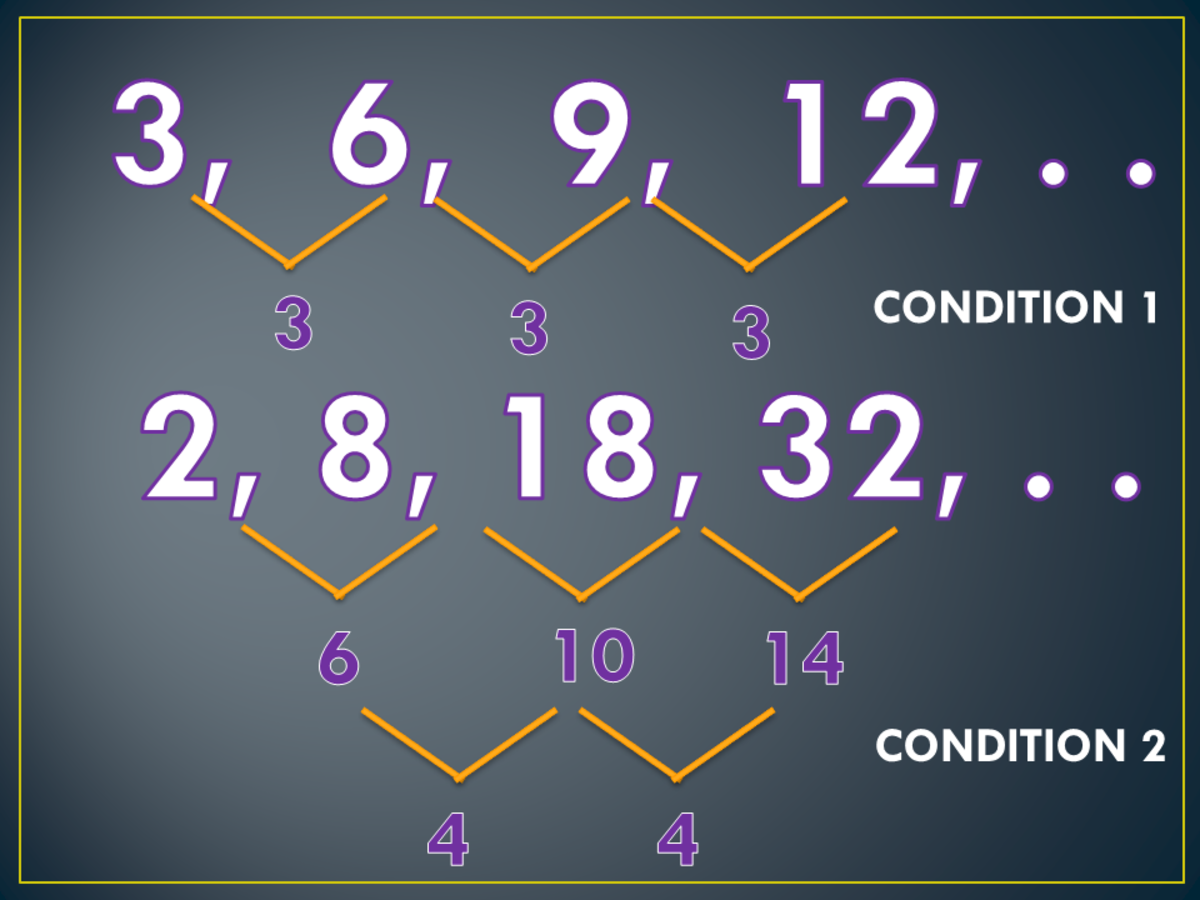



How To Find The General Term Of Sequences Owlcation
We know that $n=n(n1)/2$ I spent a lot of time trying to get a formula for this sum but I could not get it $( 2 3 2n)$ I tried to write the sum of some few terms Of course I saw some pattern between the sums but still the formula ISynonym 2(NMorpholino)ethanesulfonic acid hydrate, 4Morpholineethanesulfonic acid Empirical Formula (Hill Notation) C 6 H 13 NO 4 S · xH 2 O Molecular Weight (anhydrous basis)There is a proof method called "math induction" It consists of 2 steps 1 Check that it is true for n=1 Really, 2 = 1(11) 2 Now let's assume that there is such k, that for every n
Synonym ZPheArg7amido4methylcoumarin, Hydrochloride CAS Calbiochem Empirical Formula (Hill Notation) C 33 H 36 N 6 O 6 · xHClJun , 10 · 16* (2m) = 4n 8 32m = 4n 8 m = (4n 8)/32 m = (4*8 8)/32 m = (328)/32 m = 24/32 m = 3/4 Check your answer by plugging m and n into the equations, then check if the left side equals the right ***Candy's work is incorrectSimplify 16×2n14×2n÷16×2n22×n2 abhi1997chaudhary is waiting for your help Add your answer and earn points
N=0inf n/2 n is the expected number of consecutive times you'll get the same outcome when you repeatedly flip a coin Since there's two equally likely options, you'd expect a run to last for two flips Aside from that (because intuition can't always be relied upon and one can't know everything), you can apply the same trick as beforeQuestion Four algebra 2 questions for practice before a test??Popular Problems Algebra Identify the Sequence 2 , 4 , 8 , 16 , 32 2 2 , 4 4 , 8 8 , 16 16 , 32 32 This is a geometric sequence since there is a common ratio between each term In this case, multiplying the previous term in the sequence by 2 2 gives the next term In other words, an = a1 ⋅rn−1 a n = a 1 ⋅ r n 1




Prove That For N 1 2 3 N 1 2 N 2 4 N 4 8 N




Ex 4 1 9 Prove 1 2 1 4 1 8 1 2n 1 1 2n
May 02, 16 · 8 4 = 2 16 8 = 2 32 16 = 2 So this looks like a geometric sequence with initial term a = 4 and common ratio r = 2 If so, the formula for the n th term is an = arn−1 = 4 ⋅ 2n−1 This is probably the answer expected by the questioner However, note that any finite sequence of terms does not determine an infinite sequence unless you3Write a recursive definition for the sequence below1, 4, 9, 14 4 Write an explicit definition for the sequence 2, 8, 14,Get an answer for '`2 4 6 8 10 2n = n(n1)` Use mathematical induction to prove the formula for every positive integer n' and find homework help for other Math questions at eNotes
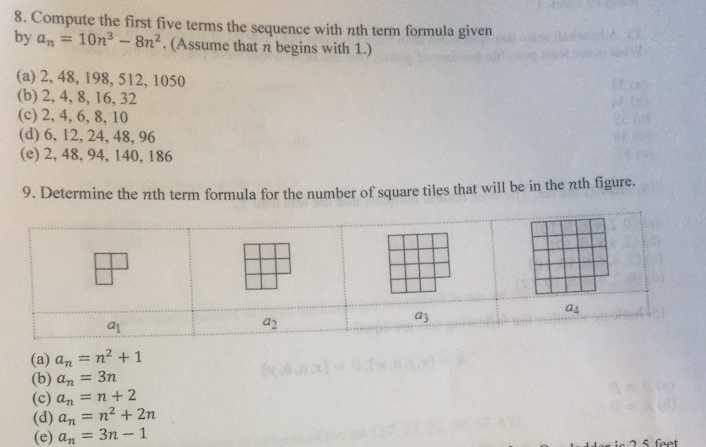



Solved 8 Compute The First Five Terms The Sequence With Chegg Com




Ml Aggarwal Solutions For Class 10 Maths Chapter 9 Arithmetic And Geometric Progression Download Free Pdf
= −92 , d = 09 Next 3 terms − , −74 , −65 Recursive a n = a n − 1 09 a 1 = −92 Given a term in an arithmetic sequence and the common difference find the recursive formula and the three terms in the sequence after the last one given 23) a 21 = −14 , d = 06 Next 3 terms −08 , −02 , 04 Recursive a n = a nNow, if we subtract the second equation from the first, the 1/2, 1/4, 1/8, etc all cancel, and we get S (1/2)S = 1 which means S/2 = 1 and so S = 2 This same technique can be used to find the sum of any "geometric series", that it, a series where each term is some number r times the previous termSolution for 2n2=16 equation Simplifying 2n 2 = 16 Reorder the terms 2 2n = 16 Solving 2 2n = 16 Solving for variable 'n' Move all terms containing n to the left, all other terms to the right




How To Find The General Term Of Sequences Owlcation




2 Which Of The Following Sequ See How To Solve It At Qanda
Quandaries and Queries Hi Ginger, You seem to be dealing with the sequence of powers of 2 1st term 2 0 = 1 2nd term 2 1 = 2 3rd term 2 2 = 4O (2^ (n1)) is the same as O (2 * 2^n), and you can always pull out constant factors, so it is the same as O (2^n) However, constant factors are the only thing you can pull out 2^ (2n) can be expressed as (2^n) (2^n), and 2^n isn't a constant So, the answer to your questions are yes and no Share Improve this answerI believe the formula on this page will need some revision based on the following advice by Ron Rosenberg on Disadvantage of # #/## formatting, A1 26 B2 =MROUND(A1,1/32) formatted as # #/## MROUND is in Analysis Tookpak displays in B2 as 26 0/1 as would the non Analysis Toolpak Function version B2 =ROUND(A1*32,0)/32 formatted as # #/##




Sum Of N Squares Part 2 Video Khan Academy
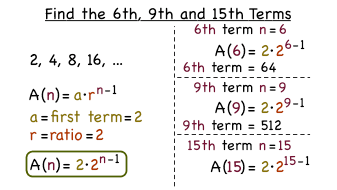



How Do You Write A Rule For A Geometric Sequence Virtual Nerd
See the answer Find a formula for 1/2 1/4 1/8 ··· 1/2n by examining the values of this expression for small values of n Then prove your formulaThis problem has been solved!Find the Sum of the Series 1 , 2 , 4 , 8 , 16 , 32 , 64 , 128 , 256 , 512 This is a geometric sequence since there is a common ratio between each term In this case, multiplying the previous term in the sequence by 2 2 gives the next term In other words, an = a1 ⋅rn−1 a n = a 1 ⋅ r n 1 This is the form of a geometric sequence




8 Proof By Induction S K 2 N N 1 2n 1 6 Discrete Principle Induccion Matematicas Youtube




Perfect Number Wikipedia
Perform the steps 1 and 2 as seen in above example Step 3 Now find the population standard deviation using the formula √10/√5 = 1414 Variance Example To find the Variance of 1,2,3,4,5 After finding the standard deviation square the values () 2 = Same for Population standard deviation (1414) 2 = 2Sep 05, 13 · The relation 2462n = n^2n has to be proved If n = 1, the right hand side is equal to 2*1 = 2 and the left hand side is equal to 1^1 1 = 1 1 = 2Jun 18, 16 · The formula for n th term of a geometric sequence is arn−1 where a is the first term and r is the common ratio In the given sequence first term is 1 and the common ratio is 2 Hence nth term would be 2n−1 Note that r = a term previous term = 2 1 = 4 2 = 8 4 = 16 8 = 2




Sequences And Summations In Discrete Mathematics




1 2 4 8 Wikipedia
2n = 2*5 = 10, therefore the sequence can be written as 246?10 Note the 4th element of the sequence is currently unknown, which isn't an impediment, as it can be resolved later using elementary arithmetic4 = 2 That's it Step3 Rewrite the polynomial splitting the middle term using the two factors found in step 2 above, 2 and 4 n2 2n 4n 8 Step4 Add up the first 2 terms, pulling out like factors n • (n2) Add up the last 2 terms, pulling out common factorsThe "n" is the position and the "u n " is the term 3 2 = 5 5 2 = 7 7 2 = 9 9 2 = 11 Therefore we can write down that u n = 2n, in other words we are doubling the number Looking again we may need to adjust that 2n slightly;




Ppt Sequences And Series Powerpoint Presentation Free Download Id




1 2 4 8 Wikipedia
So if the sequence is 2, 4, 6, 8, 10, , the sum to 3 terms = S 3 = 2 4 6 = 12 The Sigma Notation The Greek capital sigma, written S, is usually used to represent the sum of a sequence This is best explained using an example This means replace the r in the expression by 1 and write down what you getFree equations calculator solve linear, quadratic, polynomial, radical, exponential and logarithmic equations with all the steps Type in any equation to get the solution, steps and graphFree math lessons and math homework help from basic math to algebra, geometry and beyond Students, teachers, parents, and everyone can find solutions to their math problems instantly




What Is The Summation Of 2 4 8 16 1024 Mathematics Stack Exchange




Solved 1 2n 1 Let 1 1 1 1 Sn 2 4 8 16 In Class O Chegg Com
N 2 2n 8 = 0 has two solutions n = 1 √ 9 or n = 1 √ 9 Solve Quadratic Equation using the Quadratic Formula 53 Solving n 22n8 = 0 by the Quadratic Formula According to the Quadratic Formula, n , the solution for An 2 BnC = 0 , where A, B and C are numbers, often called coefficients, is given byMay 31, 09 · A drug test is accurate 98% The test is given to 2100 people who have not taken drugs Find probability that at least 46 will test positive?2 (n8)=162n Simple and best practice solution for 2 (n8)=162n equation Check how easy it is, and learn it for the future Our solution is simple, and easy to understand, so don`t hesitate to use it as a solution of your homework If it's not what You are looking for type in the equation solver your own equation and let us solve it



What Is The Next Number 2 4 8 16 32 Quora




How To Find The General Term Of Sequences Owlcation
1 What are the first four terms of the sequence given by the formula below?It is 18 * 1st term =2(2×1) * 2nd term =4(2×2) * 3rd term =6(2×3) * 4th term =8(2×4) * 5th term=10(2×5) * 6th term =12(2×6) * 7th term =14(2×7) * 8th term=16(2




Math 1 Chapter 1 Sequences And Series




Sequences And Summations Ppt Video Online Download




What Is The Sum Of 2 4 8 16 Up To Infinite Quora
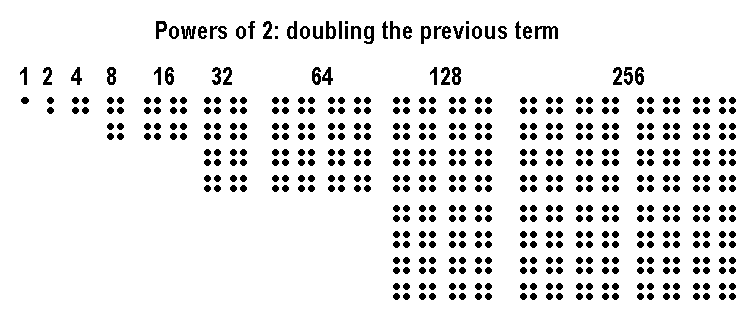



A Oeis
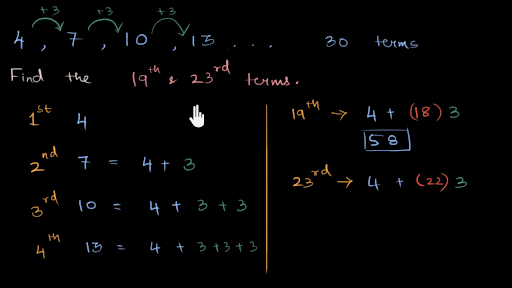



Nth Term Of An Arithmetic Progression Video Khan Academy
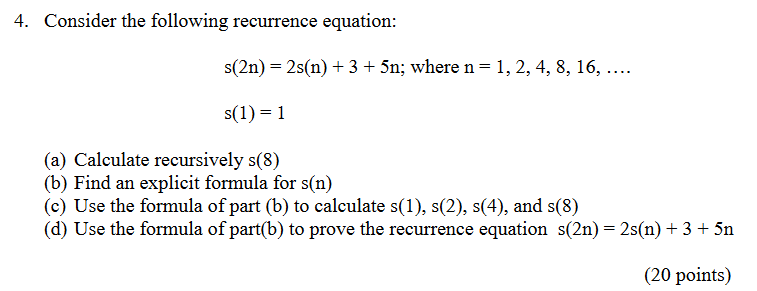



Solved Consider The Following Recurrence Equation S 2n Chegg Com




Magic Square Wikipedia




Ncert Solutions For Class 10 Maths Chapter 5 Arithmetic Progressions Toppers Bulletin




Algebra Common Assessment Review Pdf




How To Find The General Term Of Sequences Owlcation
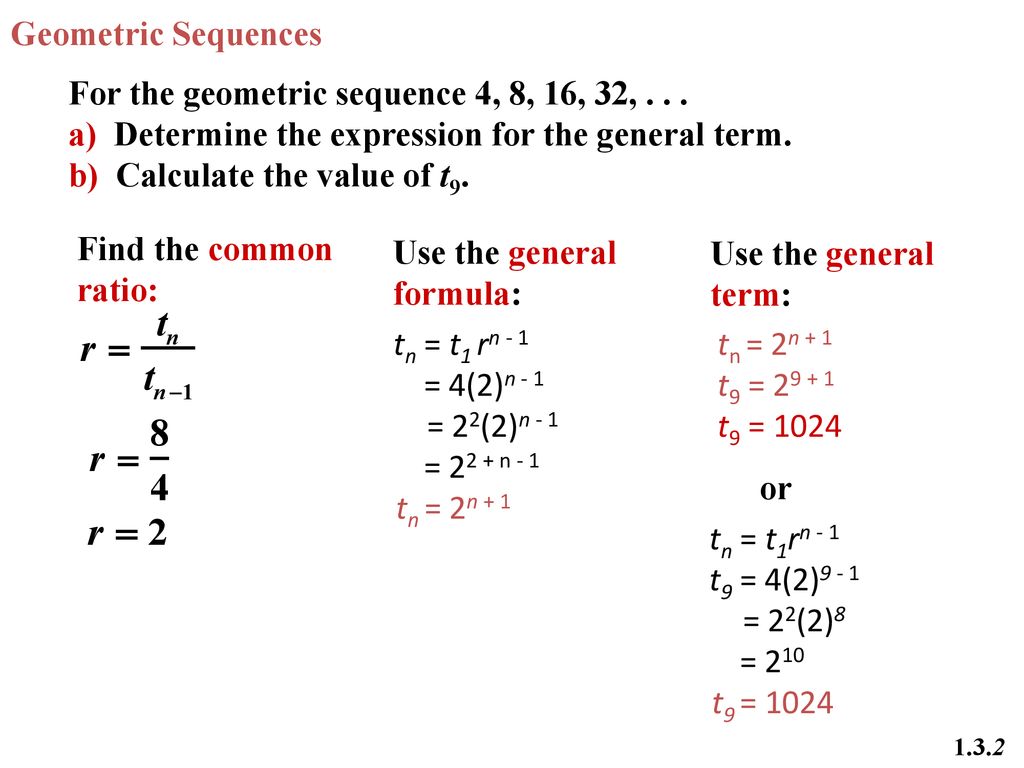



Math 1 Chapter 1 Sequences And Series Ppt Download



What Is The Name For The Pattern 1 2 4 8 16 What Is The Formula To Determine A Known Position In The Pattern Quora




Example 19 Find Sum Of Series 5 11 19 29 41




Ex 9 3 19 Find Sum Of Products Of 2 4 8 16 32 Ex 9 3




Linear Sequences And Other Patterns Ck 12 Foundation




Intro To Series What Is 1 2 1 4 1 8 1 16 Youtube




How Many Terms Of A Geometric Progression 2 4 8 16 Would Add To 126 Brainly In




Geometric Sequences And Sums
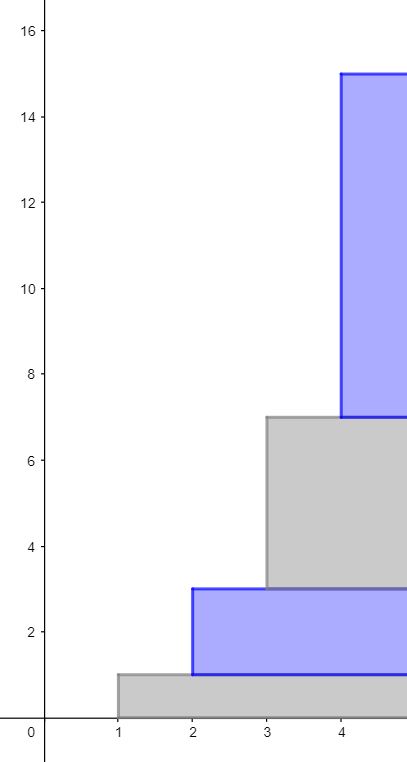



1 2 4 8 Wikipedia




Ppt Geometric Sequences Powerpoint Presentation Free Download Id




Series Progression Mathematics




Ks 4 Mathematics A 7 Sequences 1 Of




What Is The Summation Of 2 4 8 16 1024 Mathematics Stack Exchange
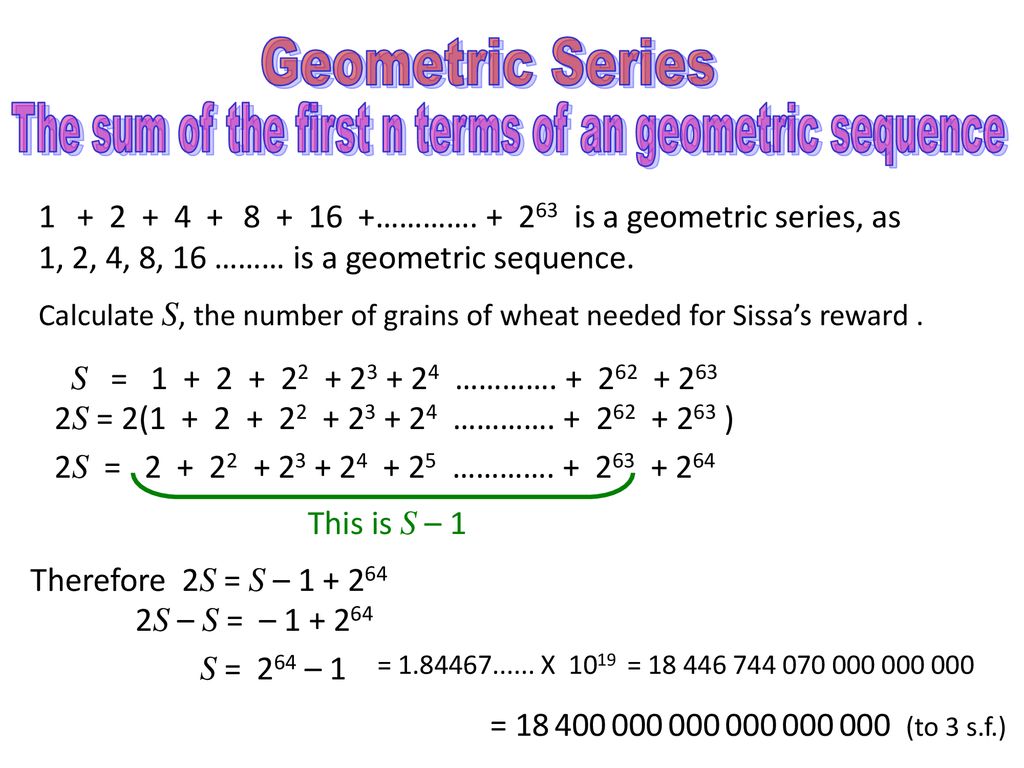



Sequences And Series Ppt Download




How To Find The Nth Term Of A Geometric Sequence Algebra 2 Mathgotserved Honors Common Core U9l4 Youtube




The Nth Term Of A Sequence Is A N 2n 3 Find Its First Four Te
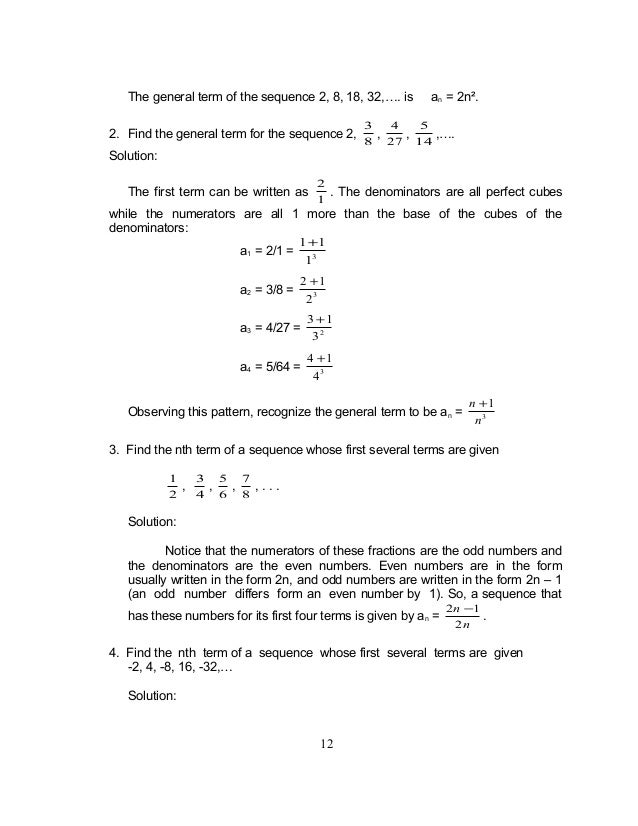



Grade 10 Math Module 1 Searching For Patterns Sequence And Series




Solved 1 Consider The Sequence 2 4 8 16 Part 1 The S Chegg Com




Solved The Following Sequences Are Arithmetic Or Geometri Chegg Com




Important Formulas And Concepts Ap Gp Icse Math Notes
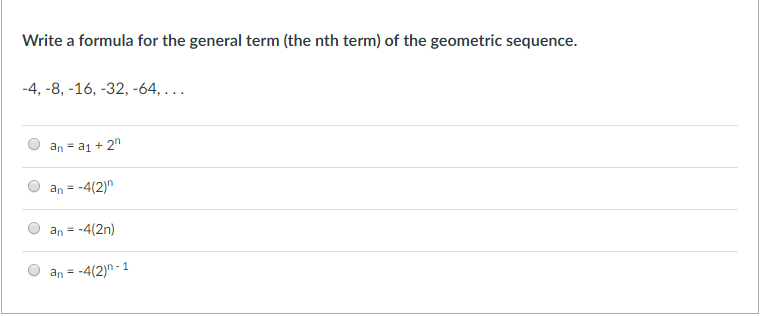



Solved Write A Formula For The General Term The Nth Term Chegg Com
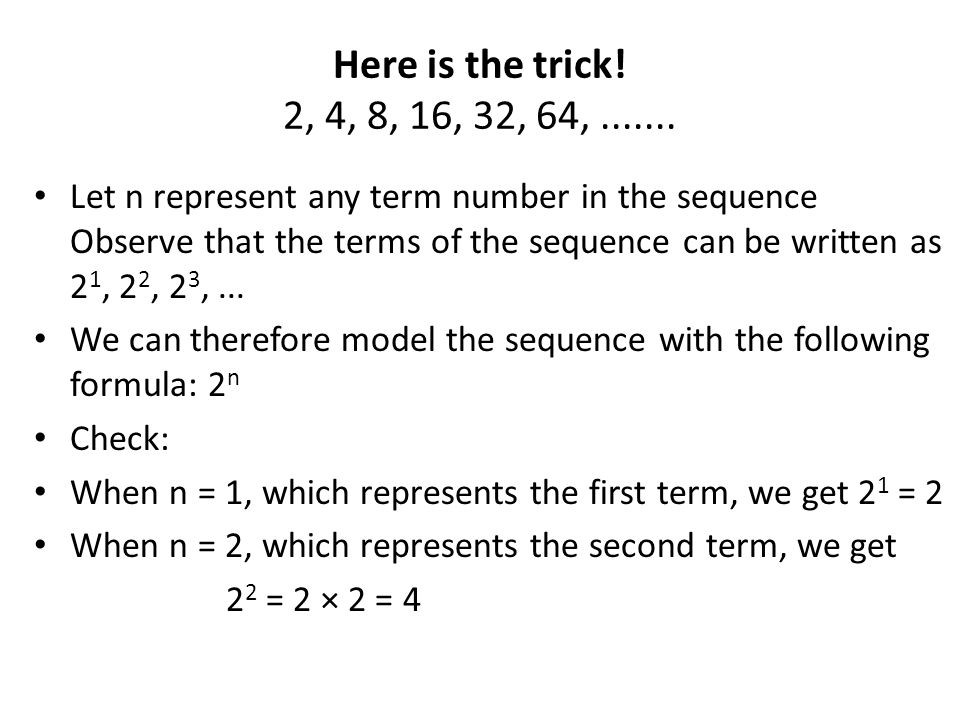



This Number Is Called The Common Ratio Ppt Video Online Download




8 4 Examples Perfect Numbers Mathematics Libretexts




Solved Consider The Following Recurrence Equation S 2n Chegg Com



What Is The Name For The Pattern 1 2 4 8 16 What Is The Formula To Determine A Known Position In The Pattern Quora




How Do You Write A Rule For A Geometric Sequence Printable Summary Virtual Nerd




Combinations 2 4 16




Using The Ratio Test For Series Convergence Video Lesson Transcript Study Com
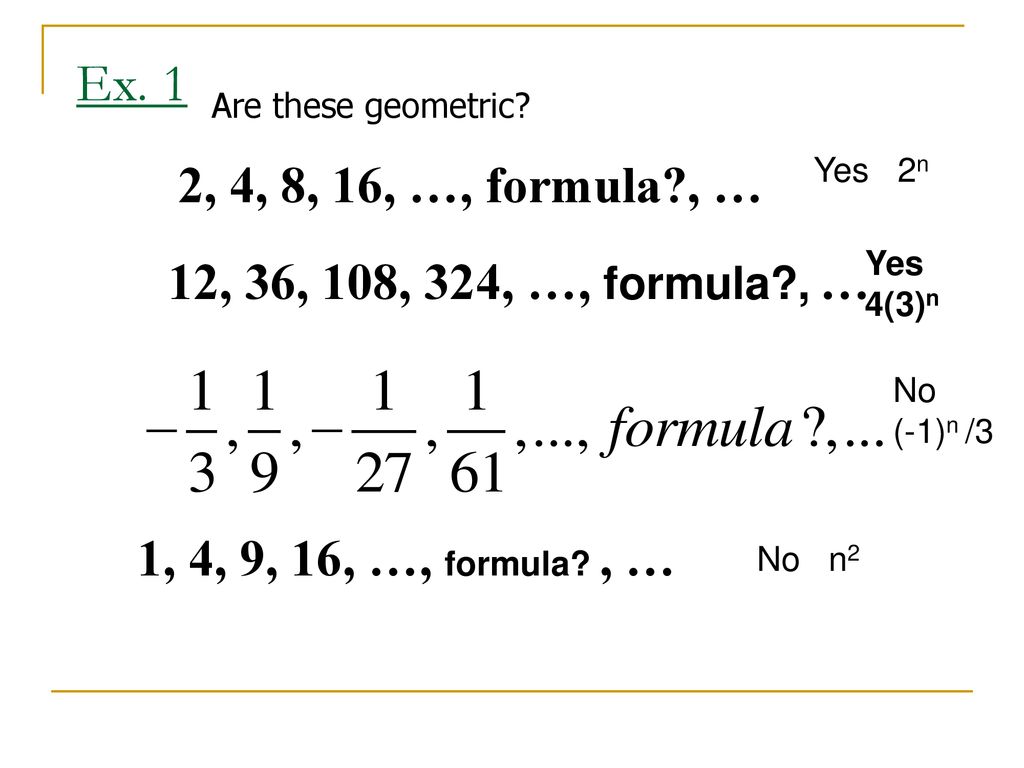



How Do I Find The Sum Terms Of Geometric Sequences And Series Ppt Download
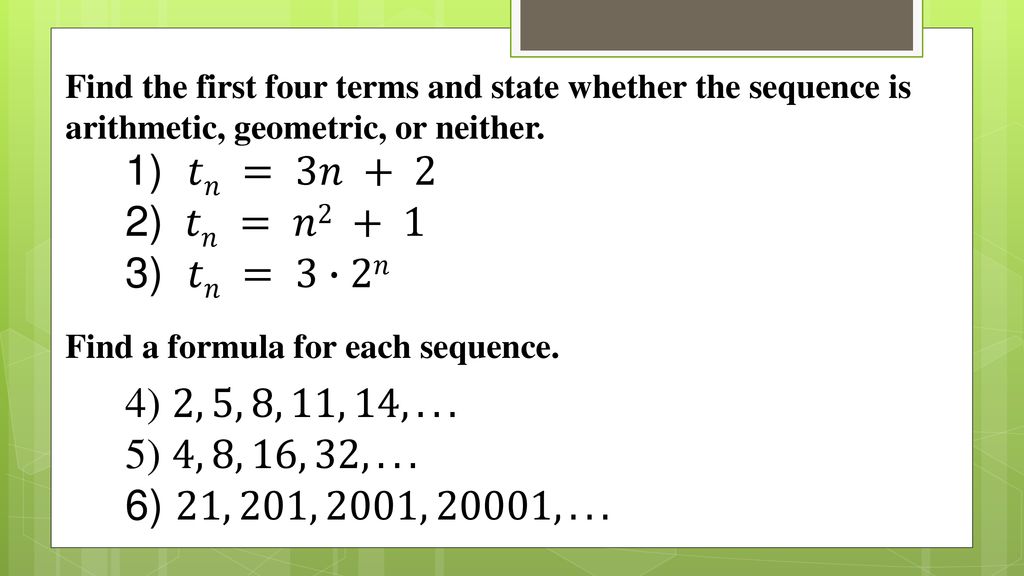



Warm Up Look For A Pattern And Predict The Next Number Or Expression In The List 500 250 125 2 1 2 4 7 11 16 3 1 3 Ppt Download
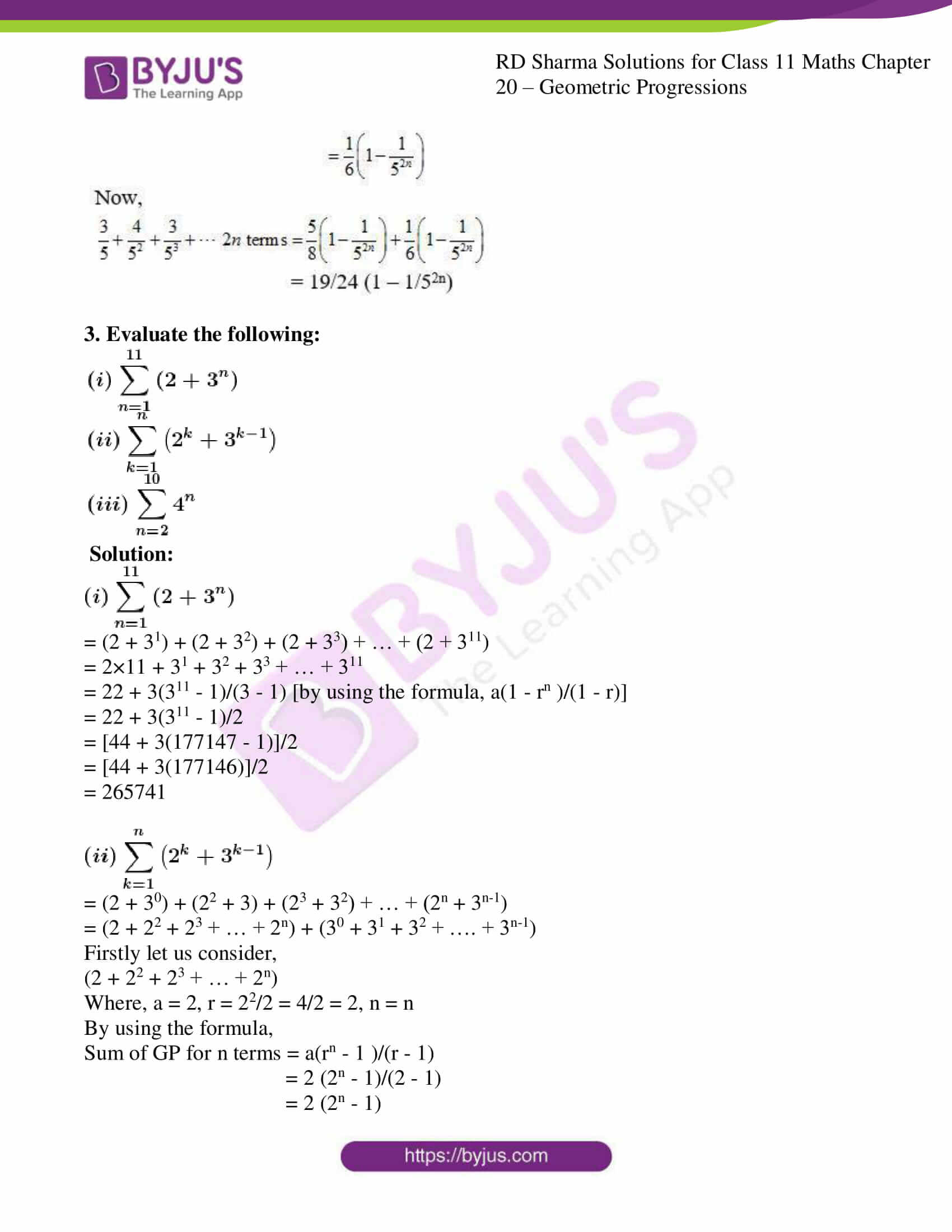



Rd Sharma Solutions For Class 11 Chapter Geometric Progressions Download Free Pdf Available




Geometric Progression Definition Formulas Properties And Examples
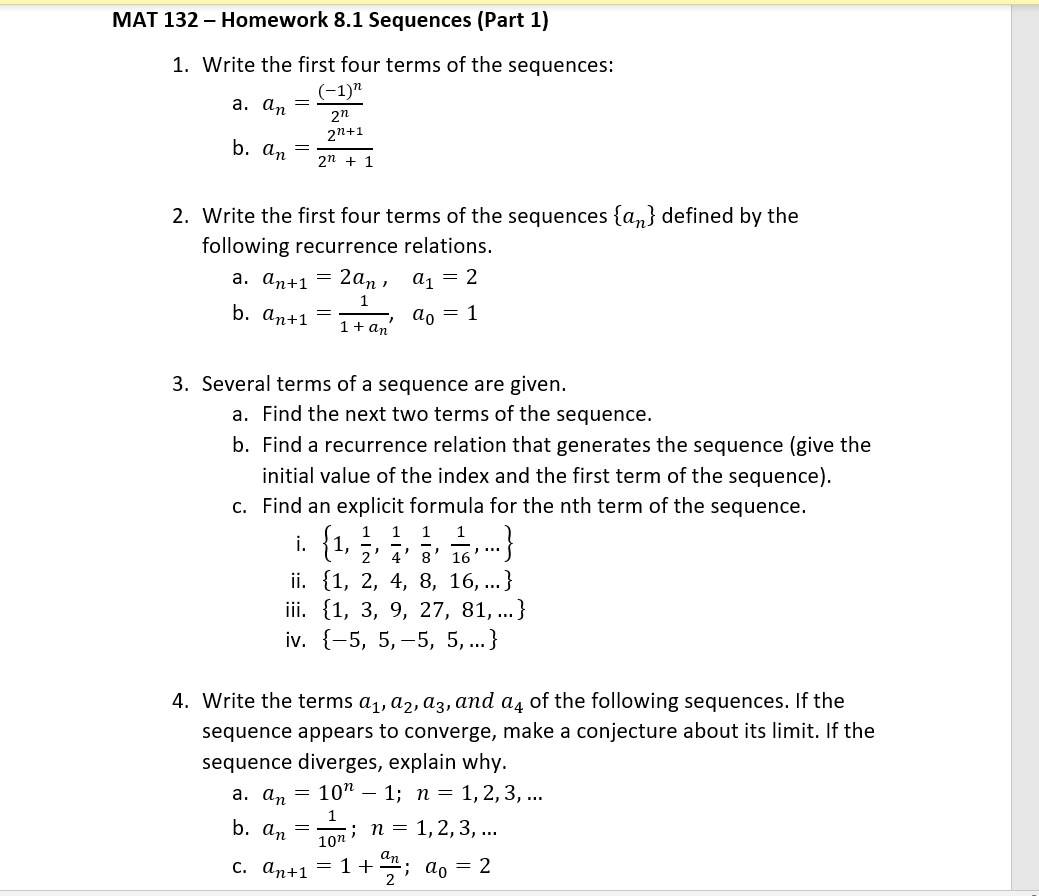



Solved Mat 132 Homework 8 1 Sequences Part 1 1 Write Chegg Com




Prove That For N 1 2 3 N 1 2 N 2 4 N 4 8 N




Surprising Patterns In The Square Numbers 1 4 9 16 Betterexplained




Ppt Discrete Structure Sequence Powerpoint Presentation Free Download Id



Ib Math I M Struggling With Math It D Be A Big Help If Anyone Could Help Me With At Least Three Problems On Number 2 Ibo
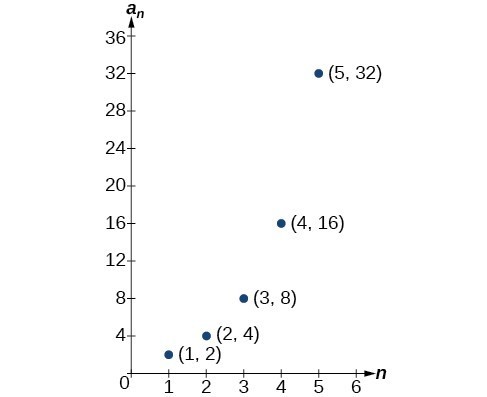



Sequences Defined By An Explicit Formula College Algebra




Misc 23 Find Sum Of Series 3 7 13 21 31 Miscellaneous




Grade 10 Math Module 1 Searching For Patterns Sequence And Series



What Is The Nth Term Of 2 4 6 8 10 Quora




Pls Solve The Following Question Q 16 2n 1 4 2n16 2n 2 4 2n 1 Maths Number Systems Meritnation Com




Geometric Sequences A Sequence In Which You Get From One Term To The Next By Multiplying By A Constant Is Called A Geometric Sequence This Is Also Known Ppt Download
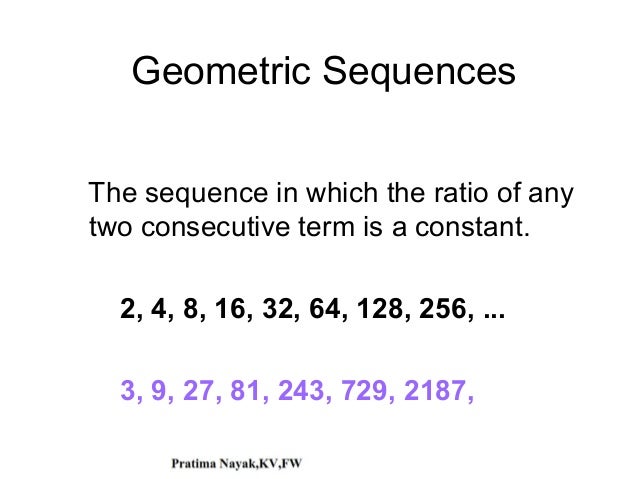



Series Progression Mathematics




Arithmetic Sequences Definition Finding The Common Difference Video Lesson Transcript Study Com




Sequences And Summations Cs 2 Epp Section 4




Tips And Tricks To Solve Sequences And Series Questions Advanced



The Double Capping Phenomenon Of Chemical Clusters



What Is The Name For The Pattern 1 2 4 8 16 What Is The Formula To Determine A Known Position In The Pattern Quora




Pi Formulas From Wolfram Mathworld




The A M Of The Series 1 2 4 8 16 2 N Is Youtube




Geometric Sequences And Sums




Ethiopia Learning Math Grade 12 Page 760 In English




Write An Equation For The Nth Term Of Geometric Sequence 4 8 16 Tessshebaylo




Example 15 Find Sum Of First 24 Terms An 3 2n Examples




How Many Terms Are In The G P 2 4 8 Upto 128 Brainly In




Surprising Patterns In The Square Numbers 1 4 9 16 Betterexplained



What Is The Name For The Pattern 1 2 4 8 16 What Is The Formula To Determine A Known Position In The Pattern Quora




Algebra 1 7 8 Complete Lesson Geometric Sequences Matthew Richardson Library Formative



コメント
コメントを投稿